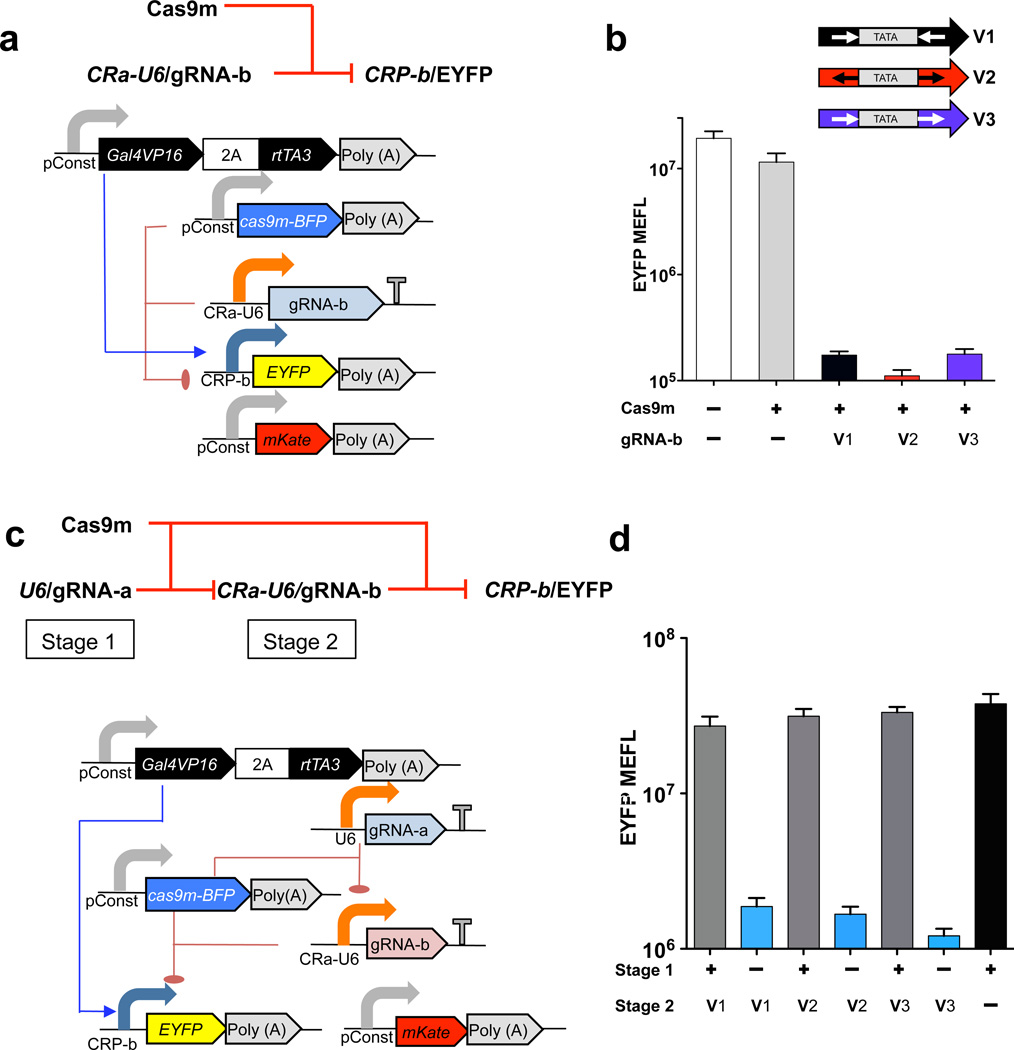Figure 1.
Design and experimental analysis in human cells of CRISPR repression devices and circuits based on the RNA Pol III U6 promoter. (a) Schematic of CRP repression device. CRa-U6 drives expression of gRNA-b, which in turn regulates EYFP output. (b) Flow cytometry–based analysis of three repression devices based on CRa-U6–driven gRNA-b expression, in HEK293 cells transfected with the indicated CRa-U6 promoter variants (V1–V3). Shown is geometric mean and s.d. of means of molecules of equivalent fluorescein (MEFL) of EYFP for cells expressing >3 × 106 MEFL of transfection marker mKate. n = 4 independent technical replicates, combined from two experiments. (c) Schematic of CRISPR transcriptional repression device cascade. U6-driven gRNA-a regulates CRa-U6–driven expression of gRNA-b, which in turn regulates CRP-b expression of output EYFP. (d) EYFP fluorescence for samples transfected either with all transcriptional units (+ for stage 1; V1 or V2 or V3 for stage 2), with all units but without U6-driven gRNA-a (– for stage 1) and with all units but without CRa-U6–driven gRNA-b (+ for stage 1; – for stage 2). Data represent geometric mean and s.d. of means of EYFP MEFL for cells expressing >1 × 107 MEFL of transfection marker mKate for n = 4 biological replicates pooled from two representative experiments.

